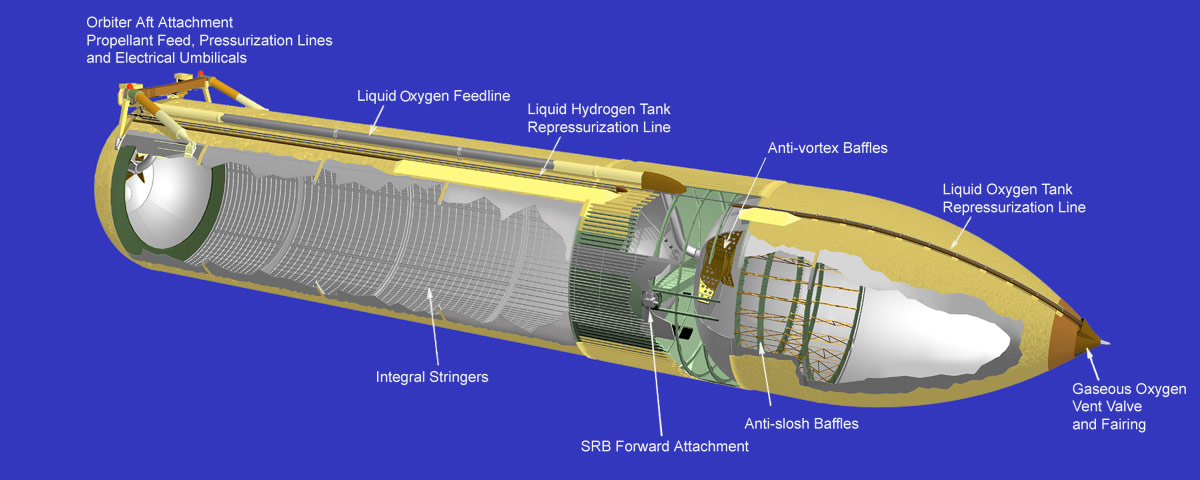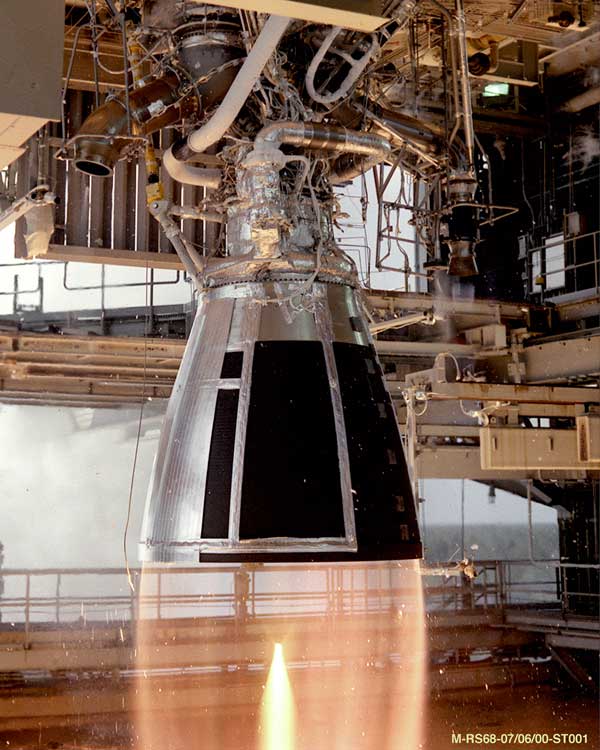There are two types of rocket engines. One which runs on liquid fuel and other one which runs on solid fuel. It is easy to control the thrust of liquid fuel engine but for solid fuel, it is quite difficult because once the solid fuel starts to burn, it will continue to burn until the tank becomes empty.
During the launch, both the solid fuel busters generates 1,500,000 kg of thrust each.for the next two minutes and three main cryogenic engines generates total 510,000 kg thrust for approx 8 minutes. This will result the successful launching of space shuttle towards the infinity.
Liquid fuel type engine also have two categories based on the working temperature of fuel. Fuel which can be stored at room temperature and other engine for r which the fuel gets stored at very low temperature. The engines which works of super-cooled fuel is known as 'Cryogenic engines', Cryo is a Greek words which means 'Super cool'.
In 1926, a Scientist named Robert Godard invented rocket engine which works on liquid fuel and launched it successfully. Before that only solid fuel rocket engines were used. He used Gasoline and liquid oxygen as a fuel where liquid oxygen was used as a oxidizer. Liquid oxygen ensures that the there will be no lack of oxygen for complete combustion as it may affect the thrust.
Fuel mixture get ignited in combustion chamber which creates very hot gasses with tremendous pressure. Now these hot high pressurized gases diverted to small nozzle where they escape to the atmosphere high velocity. It is around 8000 to 16000 Kmph. It generates high thrust and pushes the rocket in opposite direction of thrust i. e. in upward direction.
There are four types of liquid fuel based engines which are as follows:
- Liquid Hydrogen + liquid Oxygen: It is used in main engine of space shuttle.
- Gasoline + Liquid Oxygen: It was used by Robert Godard in his first rocket.
- Kerosene+Liquid Oxygen: This kind of mixture was used in the engine which was used at the final stage of Saturn-5 rocket.
- Nitrogen Tetra-oxide+ monomethyl hydrazine: It is used in Cassini engine by NASA.
Most of the satellite launching vehicles use these kind of cryogenic engines in their last stage. It is due to fact that cryogenic engine create tremendous thrust in very small interval of time. So, it will be easy to release the satellite in its specific orbit. Geostationary Satellite Launch Vehicle (G.S.L.V.) which is developed by ISRO, India uses cryogenic engine in its final stage.
Generally, liquid hydrogen and liquid oxygen are used in cryogenic engine. Hydrogen liquefies at the temperature of -251°C and oxygen liquefies at -147°C temperature. Storing these two gases in liquid state at super low temperature is a hard nut to crack. If any of these two liquid gases comes in contact with other then there will clouds of flame. Then also, these two gases used as fuel because of their high thrust generating ability after burn.
Let's see an example how cryogenic engine is useful for space shuttle.
Space shuttle is attached with an external fuel tank of 47 M high and 8.4 M in diameter. Along with that, two solid fuel busters having as high as 45 M are attached to the surface of external fuel tank. The external tank is divided into two parts, top and bottom. Top portion stores approx 529,900 kg of liquid oxygen and lower portion stores 1,438,300 kg of liquid hydrogen.
 |
| Space Shuttle External Fuel tank Anatomy |
How does cryogenic engines actually work...?
![How does cryogenic engines actually work...?]() Reviewed by Shubham
on
April 01, 2019
Rating:
Reviewed by Shubham
on
April 01, 2019
Rating:







Nice info...
ReplyDeleteThank you...I appriciate it
ReplyDeleteNice info..........
ReplyDeleteThank you... Appreciate it
Delete